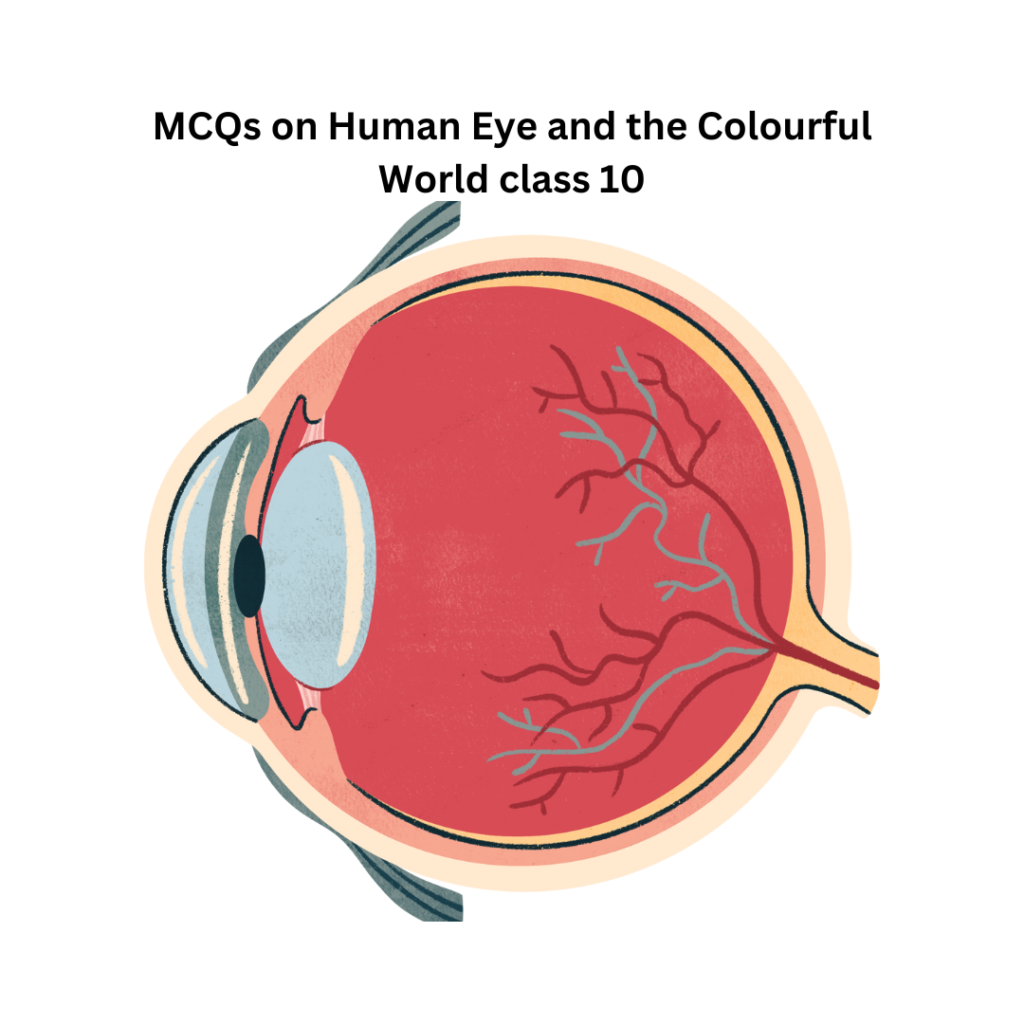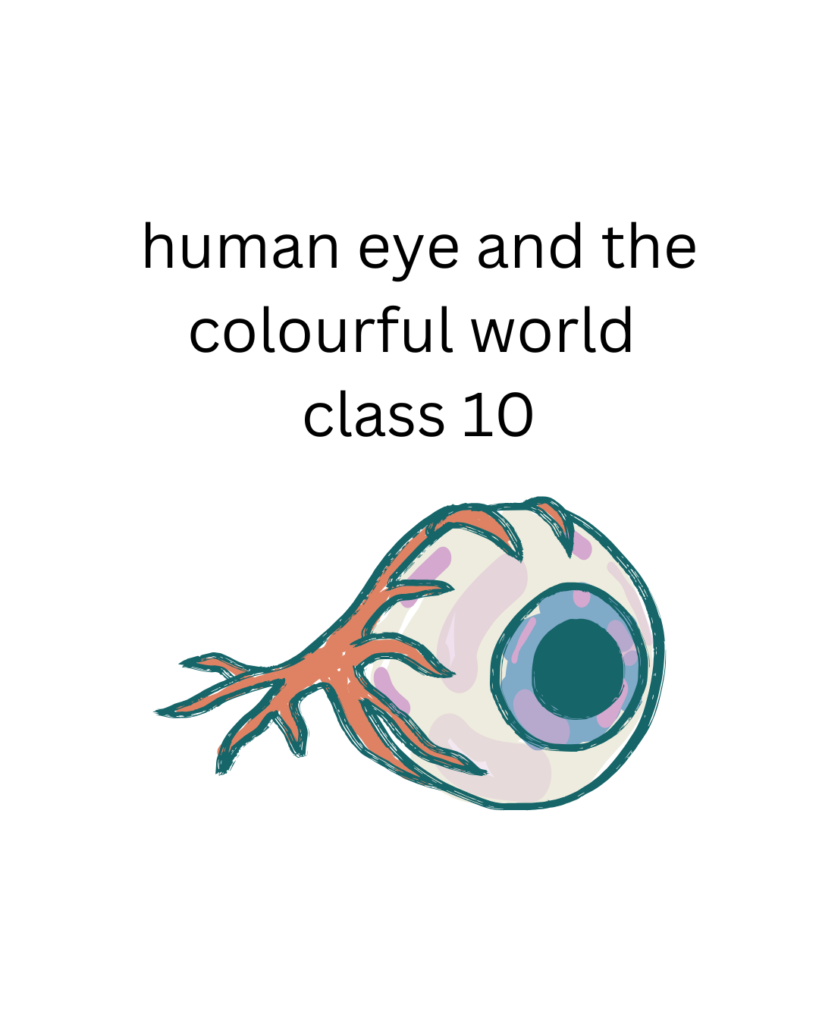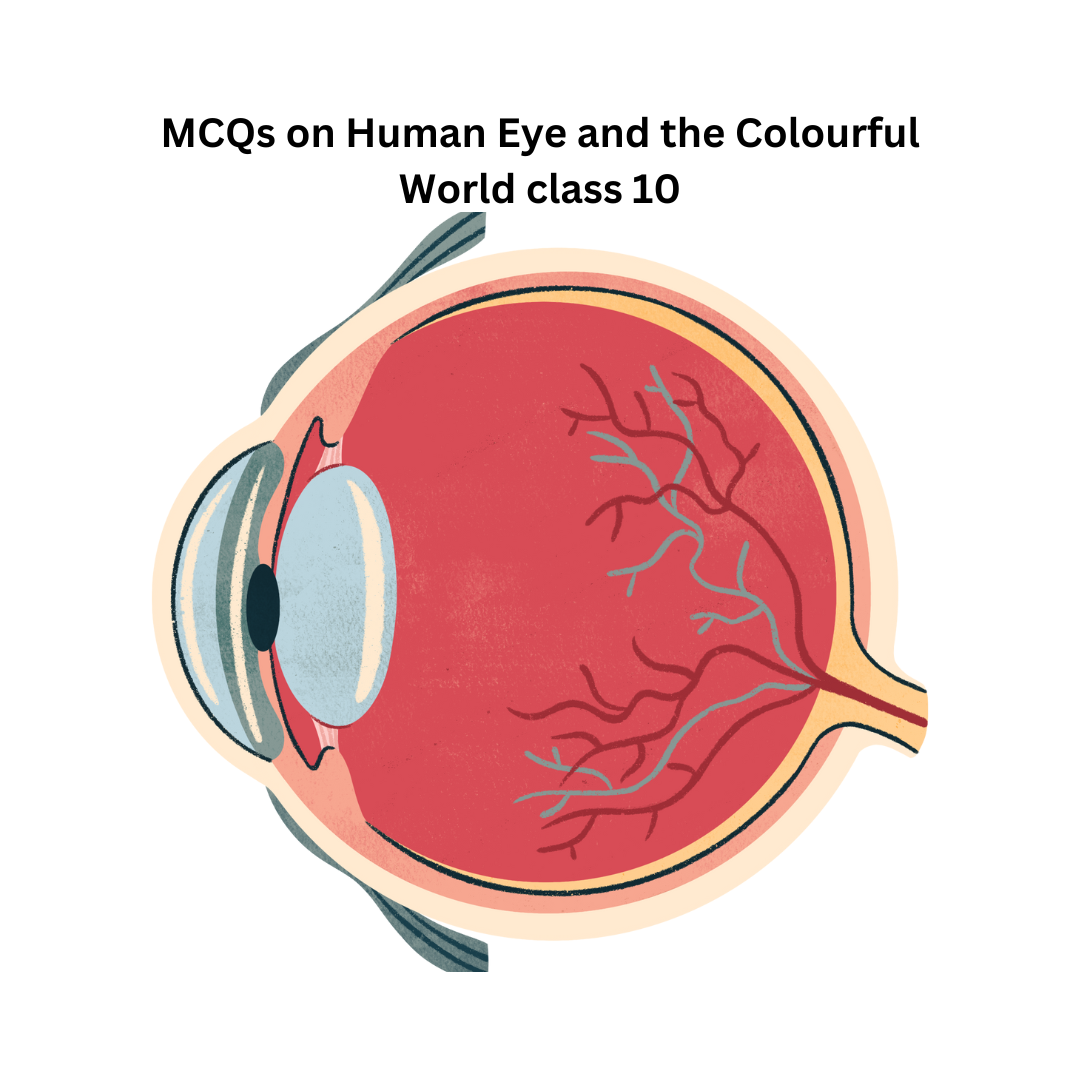MCQs on Human Eye and the Colourful World class 10. The chapter “The Human Eye and the Colourful World” from NCERT Class 10 Science explains the structure and functioning of the human eye, defects of vision, and atmospheric refraction. Here are some multiple-choice questions (MCQs) to help you revise the chapter effectively.

MCQs on human eye and the colourful world class 10, class 10 human eye mcq pdf, human eye and the colourful world class 10, mcq on human eye class 10 learn cbse, human eye and the colourful world mcq with answers class 10, mcqs on human eye and the colourful world class 10.
MCQs on Human Eye and the Colourful World class 10
1. Which part of the human eye controls the amount of light entering it?
a) Cornea
b) Retina
c) Iris
d) Optic nerve
Answer: c) Iris
2. The least distance of distinct vision for a normal human eye is:
a) 10 cm
b) 25 cm
c) 50 cm
d) 100 cm
Answer: b) 25 cm
3. Which of the following is the primary function of the retina?
a) Control light entry
b) Form the image of an object
c) Protect the eye
d) Adjust the focal length
Answer: b) Form the image of an object
4. The ability of the eye lens to adjust its focal length is called:
a) Accommodation
b) Adaptation
c) Persistence of vision
d) Refraction
Answer: a) Accommodation
5. Which of the following is NOT a defect of vision?
a) Myopia
b) Hypermetropia
c) Astigmatism
d) Reflection
Answer: d) Reflection
6. A person suffering from myopia needs:
a) Convex lens
b) Concave lens
c) Cylindrical lens
d) Plane mirror
Answer: b) Concave lens
7. The splitting of white light into its seven colors is called:
a) Dispersion
b) Refraction
c) Reflection
d) Diffraction
Answer: a) Dispersion
8. The twinkling of stars is due to:
a) Dispersion of light
b) Atmospheric refraction
c) Scattering of light
d) Reflection of light
Answer: b) Atmospheric refraction
9. Which of the following causes the sky to appear blue?
a) Reflection
b) Refraction
c) Scattering of light
d) Absorption of light
Answer: c) Scattering of light
10. The phenomenon responsible for the red color of the sun at sunrise and sunset is:
a) Reflection
b) Refraction
c) Dispersion
d) Scattering of light
Answer: d) Scattering of light
11. Which part of the eye provides most of the refraction of light?
a) Retina
b) Iris
c) Cornea
d) Lens
Answer: c) Cornea
12. Persistence of vision lasts for approximately:
a) 1/16th of a second
b) 1/10th of a second
c) 1/5th of a second
d) 1/20th of a second
Answer: a) 1/16th of a second
13. The human eye forms an image at the:
a) Lens
b) Cornea
c) Retina
d) Optic nerve
Answer: c) Retina
14. Which of the following helps in the transmission of visual signals to the brain?
a) Iris
b) Retina
c) Optic nerve
d) Cornea
Answer: c) Optic nerve
15. What type of lens is used to correct hypermetropia?
a) Convex lens
b) Concave lens
c) Cylindrical lens
d) None of these
Answer: a) Convex lens
16. What is the cause of presbyopia?
a) Defective cornea
b) Weakening of ciliary muscles
c) Excessive exposure to light
d) None of the above
Answer: b) Weakening of ciliary muscles
17. The danger signals are red because:
a) Red light is least scattered
b) Red is the most attractive color
c) Red light moves faster
d) Red light is highly absorbed
Answer: a) Red light is least scattered
18. Which of the following causes the formation of a rainbow?
a) Reflection, refraction, and dispersion
b) Only dispersion
c) Only reflection
d) Refraction and reflection
Answer: a) Reflection, refraction, and dispersion
19. The minimum distance at which the human eye can see an object clearly without strain is called:
a) Least distance of distinct vision
b) Focal length
c) Visual distance
d) None of the above
Answer: a) Least distance of distinct vision
20. Why do planets not twinkle like stars?
a) Planets are closer to Earth
b) Planets reflect more light
c) Planets have larger size
d) Both a and c
Answer: d) Both a and c

Conclusion
Practicing these NCERT Class 10 Science MCQs on “The Human Eye and the Colourful World” will help you understand key concepts for board exams. Keep revising and stay prepared!
🔔 Stay Updated! For more study materials, visit StationVidya.com and follow us on social media for regular updates.
Download pdf for the MCQ
That’s all for the class 10 human eye mcq pdf, human eye and the colourful world class 10, mcq on human eye class 10 learn cbse, human eye and the colourful world mcq with answers class 10, mcqs on human eye and the colourful world class 10.
You can follow us on Instagram: https://www.instagram.com/stationvidya/
Facebook: https://www.facebook.com/stationvidya/
You tube: https://www.youtube.com/@stationvidya/
We hope you’d loved the content , please do like, share and comment.
Subscribe for notification
You may like this post https://stationvidya.com/letter-to-the-editor-on-pollution-class-89-10/

Leave a Reply